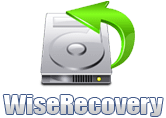About RMVB
RealMedia Variable Bitrate (RMVB) is a variable bitrate extension of the RealMedia multimedia container format developed by RealNetworks. As opposed to the more common RealMedia container, which holds streaming media encoded at a constant bitrate (CBR), RMVB is typically used for multimedia content stored locally. Files using this format have the file extension “.rmvb”. RMVB files are extremely popular for distributing Asian content, especially Chinese television episodes and movies.
Why RMVB files can be recovered?
Actually there is something named file allocation table in all disks in your computer, such as floppy drives, hard drives, as well as CompactFlash and SmartMedia cards. Technically, a file allocation table (FAT) is a table of contents which tells the computer where files lie on the disk, how long they are and what their names are. If the disk’s FAT is corrupted or deleted, the computer can never locate the wanted data in the disk. So you cannot see your deleted files. However when you delete some files you didn’t delete the real files, it is the file’s entry from the file allocation table that have been deleted. The actual contents of the file are still there on the disk. This is just like a book without a bookmark, you cannot locate the exact page you read last time immediately.
How to recover RMVB files with Wiserecovery
- 1. Download WiseRecovery Software, install it and launch it. Click the “Start Scan” button on the main window of WiseRecovery.
- 2. You can see the list of all volumes found on your computer, select the exact drive and click the “Next” button to start scanning. If you can’t see the drive, please make sure your external drives are connected, and click ‘Refresh’ button.
- 3. It will take about 2-10 minutes to scan, it depends on your disk size and files amount on the disk. After scanning is finished, you can preview text document and picture files.
- 4. Select the files or folders that you want to recover and press the “Recover” button, on the popup window, please select target directory to save the recovered files. WiseRecovery will recover files instantly. Now you can click ‘open the destination directory’ button to see the recovered files!
- Note: Please don’t recover the file to the disk you are recovering files from!


 English
English Français
Français Español
Español Deutsch
Deutsch Italiano
Italiano 日本語
日本語 简体中文
简体中文 繁體中文
繁體中文